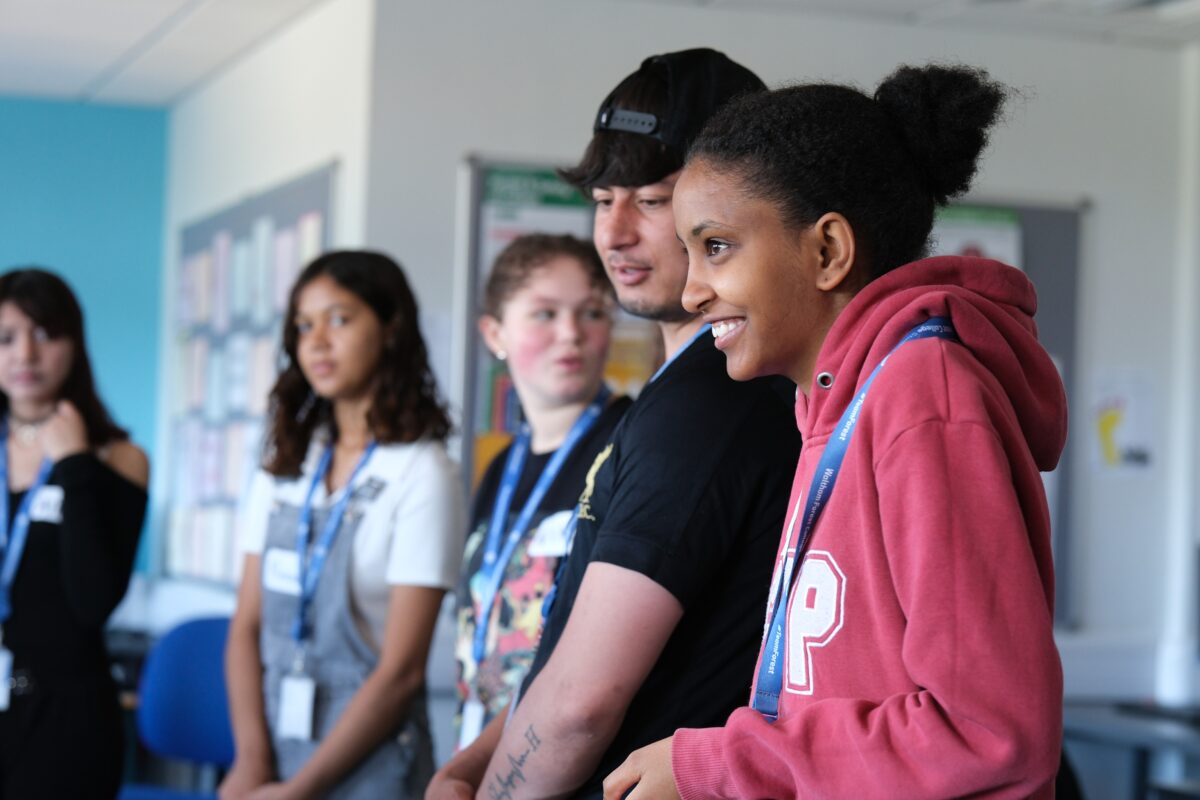Embedding DE&I in your business – how to harness its power

In recent years, DE&I has become the hot-button topic with businesses globally. Organisations of all shapes and sizes are seeing the benefit of a truly diverse workplace – from productivity, to recruitment, to employee retention, the ripple effect of a solid DE&I strategy is endless.
Whilst diversity, equality and inclusion are now at the core of many business policies, there can be no doubt that it needs to be done right. It is essential that it is more than simply conducting a box-ticking exercise and must be approached and implemented with people at the heart if the benefits are to be felt by all within the business. Making sure that DE&I is embedded correctly across the business is crucial, and this all comes down to approach.
Vertical slice method
The vertical slice method can be an incredibly effective tool for businesses looking to harness the power of DE&I. Conventionally, organisations contain many talented people, but planning teams are often comprised of a small section recruited to a similar requirement – a structure that bottlenecks diversity. Having a homogenous and horizontal section of the workforce involved in planning can stifle the implementation of diversity, and lead to a lack of depth in organisational decision-making.
By creating a small planning team from a cross-section of your business, the vertical slide method allows teams to harness greater diversity of thought. By bringing members across all levels and backgrounds into your planning process, business leaders can draw on experiences and input from an incredibly wide range of perspectives. This allows your team to factor in all considerations and remain agile – something that can greatly bolster resilience and adaptability.
Equity is equally important
Equity is equally important if you are to harness the best from your diversity policy. A diverse team will always be built on a foundation of members from varying backgrounds, with different challenges and needs. Equity recognises that each person has different circumstances and allocates the exact resources and opportunities needed to allow them to thrive and perform at their best level, regardless of who they are. This approach increases employee engagement and satisfaction, leading to higher retention within your workforce. By tailoring your approach to your team and knowing your people well, you provide the tools for them to be brilliant.
To ensure diversity is embedded effectively and positively, it is important to diagnose your workplace culture. This can be achieved by making sure you understand your team as well as you know your processes, with a dual-lens approach. Identifying ‘what makes us effective’ is crucial. It helps you enhance those cultural strengths and remove behaviours which are counter-productive. Additionally, creating and promoting a workplace that encourages input is important to ensure that you can read your culture effectively. This graphic by team performance expert Tom Geraghty shows the importance of psychological safety – it has a direct knock-on effect that allows for inclusion, creates diversity and facilitates performance. Diagnosing your culture is the first and most important step in crafting a positive workplace – and can be the difference between diversity being embedded in your business and it passing you by.
Embrace DE&I in a positive and meaningful way
This focus on your people allows you to embrace DE&I in a positive and meaningful way, embedding it into your business ethos and reaping the myriad benefits. This will have a positive effect on your culture – allowing you to leverage your team to drive efficiency, productivity and increase outputs from your team. In fact, a report from McKinsey found that companies that focus on diversity are 36% more likely to have above-average financial returns for their industry.
In summary, effective DE&I never happens by accident, but is shaped by positive interventions which are inclusive of all. Using the vertical slice method and equity, as part of a broader stress testing initiative, allows businesses to operationalise and leverage diversity in order to embrace new ideas and strengthen teams. Companies who ensure that they’re embedding DE&I strategies into their workplace, really investing in the fulfilment of the approach and not just doing it as a box-ticking exercise will be the ones who reap the ultimate rewards.
By Chris Paton, MD at Quirk Solutions
Chris Paton biography:
Chris is the founder and Managing Director of Quirk Solutions. In his former career, he was a Lieutenant Colonel in the Royal Marines and advisor to the UK Cabinet and National Security Council on the Afghan strategy. Bi-lingual in French and with a Masters Degree in International Liaison and Communication, Chris is a Fellow of the Strategic Planning Society and has been published in HBR as well as Strategy Magazine. An experienced keynote speaker, Chris has given talks at conferences in New York, Berlin, London, Istanbul and Cannes, and has lectured on the London Business School’s Executive Education Programme.
What motivates Chris more than anything is helping others. This is due in part to his service background and sense of duty, but ‘fixing problems’ for organisations and seeing them improve as a result gives him a big grin. This enthusiasm, and his genuine desire to make a difference, draws client teams with him and helps overcome change resistance.











Responses